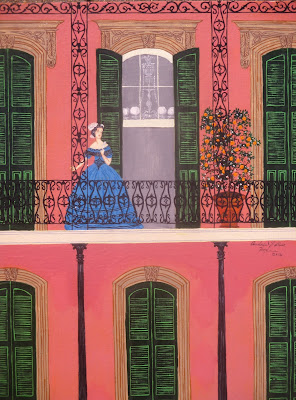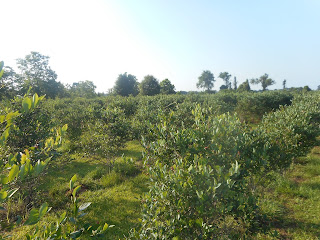Omelette Alaska Antoine
Antoine’s very special dessert, filled with vanilla ice cream with pound cake on the bottom and egg white meringue on top flambeed on the outside to perfection. The presentation of Baked Alaska for two (Please note: This special dessert must be ordered in advance.)
Last Summer I spent a month in France for my birthday. I arrived back to New Orleans at the end of Aug. My birthday is Aug 2th. As a Leo I celebrate my birthday the whole month of August. Last year the celebrations spilled out into the next month as New Orleans friends treated me to lunch and dinner for my birthday during the month of September. One of these memorable outings was held at world famous Antoine's Restaurant. having been established in 1840 by Antoine Alciatore of Bordeaux France where I just came back from spending almost two weeks. Antoine's is a Louisiana Creole cuisine restaurant located at 713 rue St. Louis (St. Louis Street) in the French Quarter of New Orleans, Louisiana. It has the distinction of being the oldest family run restaurant in the United States.
Scarlett and Rhett enjoy fine dining at Antoine's on their honeymoon in New Orleans.
The birthday party of friends.
This New Orleans institution, it is notable for being the "inventor" of several famous dishes, such as Oysters Rockefeller, Pompano en Papillote, Eggs Sardou and Pigeonneaux Paradis. Antoine's Cookbook, compiled by Roy F. Guste (the fifth-generation proprietor) features hundreds of recipes from the Antoine's tradition. The restaurant is also known for its VIP patrons (including several U.S. presidents and Pope John Paul II).
Me to the right wearing a wonderful Hermès silk scarf, a birthday gift from my friend Judy in the hat.
Antoine's features a 25,000 bottle capacity wine storage and 14 dining rooms of varying sizes and themes, with several featuring Mardi Gras krewe memorabilia. The lengthy menu (originally only in French, now in French and English) features classic French-Creole dishes. By tradition, Antoine's is closed to the general public on Thanksgiving, Christmas and Mardi Gras. The restaurant can be reserved for private parties on these "Closed Days." Advance reservations are required for dining during Mardi Gras and on weekends. The executive chef as of November 2012 is Michael Regua.
Poulet aux champignons -
Chicken breast sautéed with fresh mushrooms, butter and garlic.
Huitres en coquille a la Rockefeller (notre creation) -
Louisiana Gulf Oysters baked on the half shell with the original Rockefeller sauce created by Antoine's in 1889.
Omelette Alaska Antoine
Antoine’s very special dessert, filled with vanilla ice cream with pound cake on the bottom and egg white meringue on top flambeed on the outside to perfection. The presentation of Baked Alaska for two (Please note: This special dessert must be ordered in advance.)
In the late 1800s Antoine's son Jules took over running the restaurant. Jules perfected the recipes for what would become its signature dishes, including oysters Rockefeller, escargots a la bourguignonne, souffleed potatoes and baked Alaska.
Jules also acquired property around the original restaurant as it became available, including a former slave quarters and carriage house. Antoine's eventually could accommodate 800 people in its 14 dining rooms. Each dining room was decorated according to a theme, many of the themes referencing a Mardi Gras krewe, such as Rex, Proteus, Twelfth Night or Maison Verte.
Baked Alaska (also known as glace au four, omelette à la norvégienne, Norwegian omelette and omelette surprise) is a dessert food consisting of ice cream and cake topped with browned meringue.
The dish is made of ice cream placed in a pie dish lined with slices of sponge cake or Christmas pudding and topped with meringue. The entire dessert is then placed in an extremely hot oven for a brief time, long enough to firm the meringue. The meringue is an effective insulator, and the short cooking time prevents the heat from getting through to the ice cream.
The most common claim about the name "Baked Alaska" is that it was coined at Delmonico's Restaurant by their chef-de-cuisine Charles Ranhofer in 1876 to honor the recently acquired American territory of Alaska. However, no period account exists of this happening and the name would not be used until later. Ranhofer himself referred to the dish as "Alaska Florida" in 1894, apparently referring to the contrast between extremes of heat and cold. The name "omelette à la norvégienne"/"Norwegian omelette" similarly refers to the low temperature of Norway.
February 1 is Baked Alaska Day in the United States.
Cellars are not practical in New Orleans because the water table basically begins a couple of inches below the surface. Therefore, Antoine's has what is best described as a "wine alley", a corridor 165 feet (50 m) long, lined by wine racks and carefully air-conditioned. Guests who are present at closing time are sometimes offered a tour of Antoine's, which includes the 14 dining rooms and many display cases full of Antoine's memorabilia.
Antoine is also known for Cafe Brulot, a drink made from coffee, orange liqueur, cinnamon stick, sugar, cloves and lemon peels. At Antoine's, the coffee is customarily flamed when it is served as part of a dessert course.
The architecture of the main dining room is amazing with original moldings and columns.
During Prohibition, Antoine's served alcohol in coffee cups that were carried through the ladies restroom into the Mystery Room, one of the themed dining rooms.
The restaurant closed the Japanese Room at the beginning of World War II. It remained closed for 43 years.
Antoine's requires all aspiring servers to spend two to three years in its apprentice program before they "make waiter."
The main dining room at Antoine's
Dinner at Antoine's, a 1947 murder mystery by Frances Parkinson Keyes, begins with a dinner party in the 1840 Room and includes another dinner party at Antoine's near the end. Antoine's itself is not pivotal to the plot, which hinges on the murder of a woman from a snobbish-but-impoverished old Creole family, just as she was beginning to face a serious chronic illness. Rather, Antoine's is part of the ambiance of New Orleans, which Keyes depicts as an exotic, half-foreign city whose ways are not easily understood by outsiders, especially those from the North. The novel is notable for its use of the "least likely person" motif in revealing the identity of the murderer, and for a final plot twist that renders the murder and its aftermath even more tragic. Antoine's is mentioned in other novels by Keyes, including Once on Esplanade, Crescent Carnival, The River Road, and its sequel, Vail D'Alvery. Dinner at Antoine's was Keyes's best-selling and best-known book.
If you are visiting New Orleans "No New Orleans trip is complete" without a "sumptuous" French-Creole meal at this "classic of all classics" (established 1840) "in the heart of the French Quarter", where "oysters Rockefeller was invented"; the "elegant" setting is "composed of many period rooms" that boast "museum-quality artifacts" ("ask for a guided tour"), so even if prices are thoroughly modern, everything else is a "throwback to a more gracious time"
Antoine's Restaurant
713 St Louis St, New Orleans, LA 70130











































































